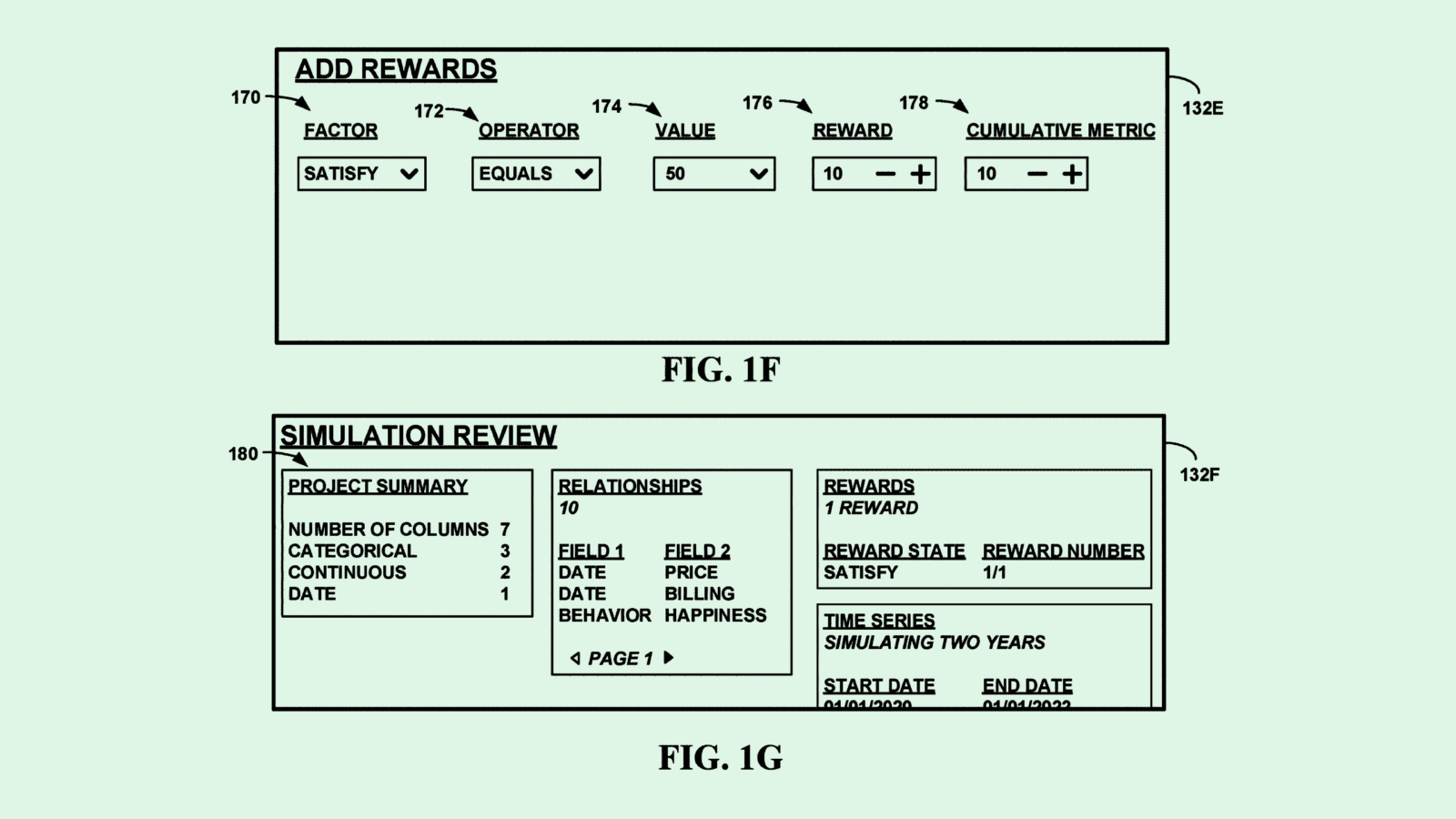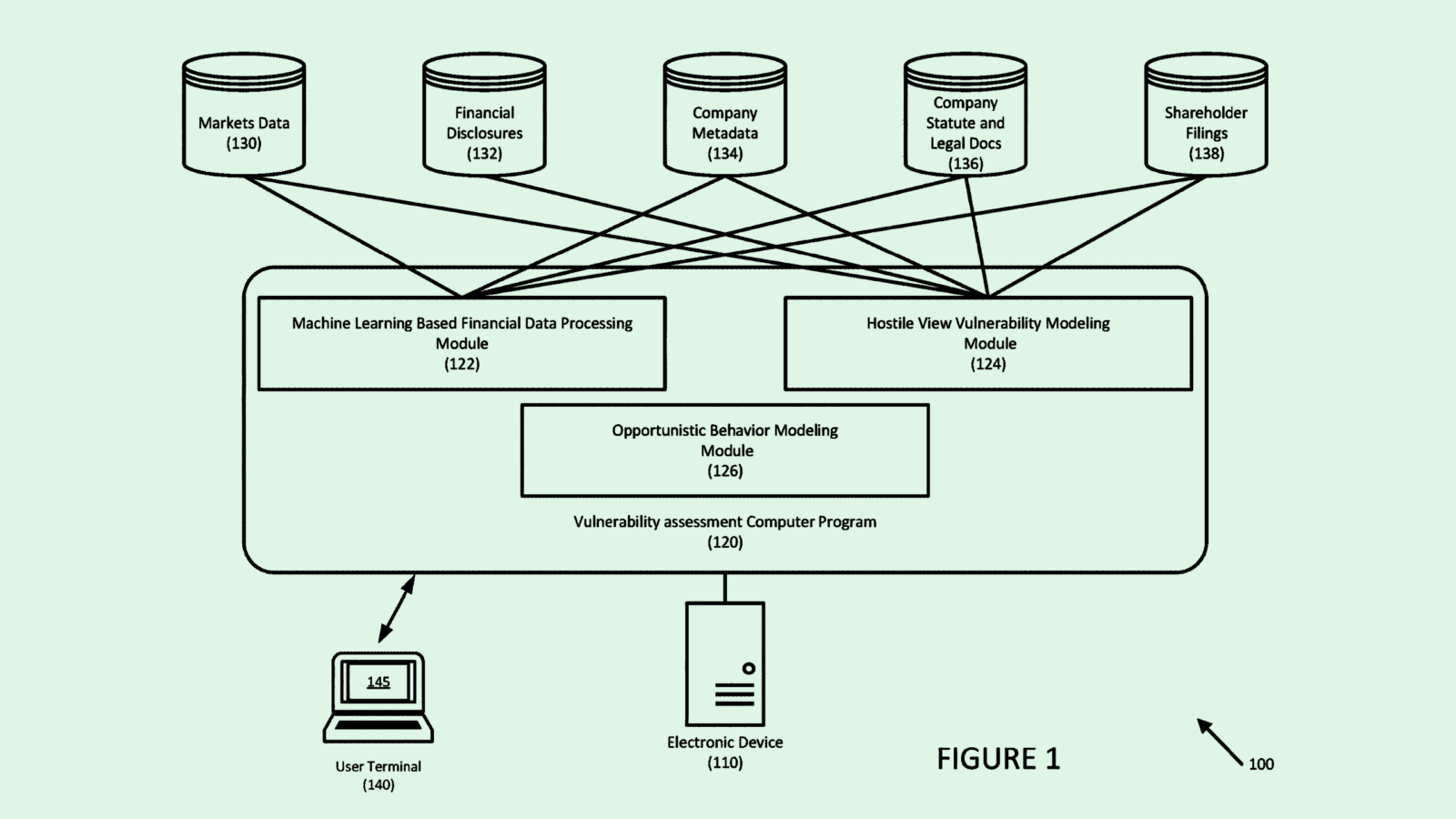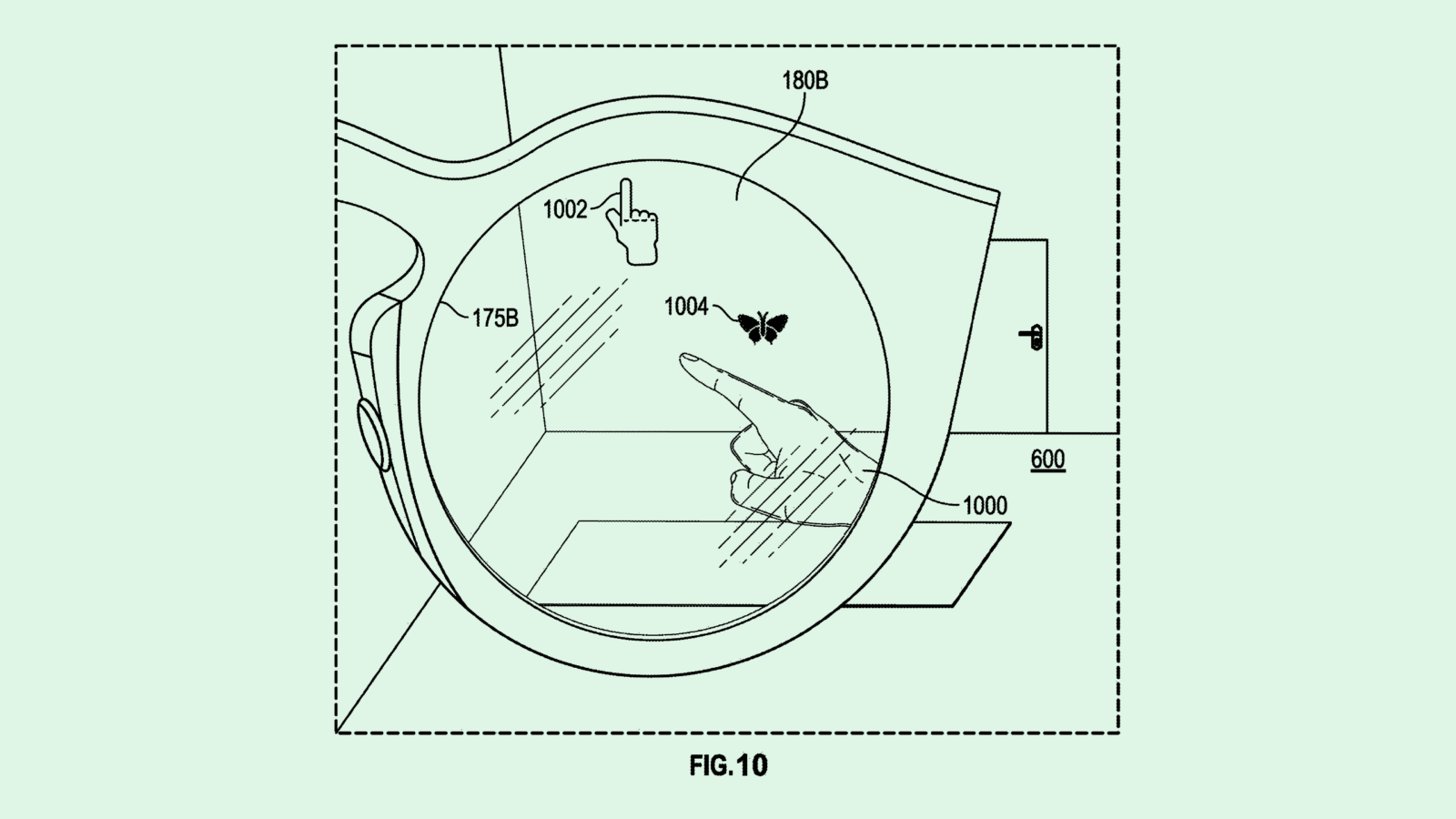Happy Thursday and welcome to Patent Drop!
Today, IBM’s tech to create synthetic data for AI training underscores that offering AI services may be just as lucrative as building AI models themselves. Plus: JPMorgan Chase wants to predict overly-aggressive investors; and Snap wants to complete the AR experience with spatial audio.
Let’s dive in.
IBM’s Data Maker
When feeding data-hungry AI models, IBM may want to give them the fake stuff.
The company is seeking to patent a system for synthetic data generation. IBM’s system essentially creates simulations of authentic data from real users, aiming to “side-step concerns with regulations” and privacy.
IBM noted that one of the biggest things holding back rapid AI development is the need for “accurate and representative data” for training. If not trained properly, “the AI model is liable to eventually be unreliable and/or inaccurate in use,” the company noted.
IBM’s system relies on “logical graphs,” which represent the paths that user interactions take with an interface, such as a website or platform. After a user interacts with an interface, an AI model takes that interaction and simulates it several times over, creating a full set of training data of user behaviors without the need for any actual user data.
Additionally, in order to refine the simulations, users that are interacting with the interface receive positive or negative rewards associated with different interactions, like positive feedback for completion of certain tasks. For example, if IBM’s system is creating training data relating to a video game where users take care of virtual pets, a positive reward may be a happy interaction with the pets for tasks like playing or walks. That would then be translated to the AI model for replication.
This allows the model to create simulations based on actual human inclinations and behaviors, helping the model “define why agents of the AI model would choose different paths.”
The result is training data that mirrors real human interactions, choices, and behaviors, without violating user privacy.

Privacy is one of the main selling points for synthetic data. One of AI’s biggest issues is the fact that, if it’s taking in real user data for training, it runs the risk of spitting that exact personal data back out if prompted in a specific way. But creating data that mimics how a real person would behave presents a solution, said Bob Rogers, PhD, co-founder of BeeKeeperAI and CEO of Oii.ai.
The other advantage of synthetic data is that it’s generally far cheaper, said Rogers. Using human labor to process data can be pricey and time consuming, whereas using an AI model to generate an abundance of clean and processed data instantaneously can save tons of resources.
However, synthetic data comes with its own set of risks, said Rogers. While this data can protect user privacy if done right, if it mimics an actual user’s personal data too closely, it can do the opposite. This is particularly relevant if using synthetic data in training AI models for things like healthcare or finance.
“If it’s at the point where you’re generating perfect synthetic data that can be used to train algorithms, it’s basically just replicating private data,” said Rogers. “I’m not sure that it’s actually that secure if you’re able to reconstruct real data from the underlying data.”
On the other hand, if synthetic data isn’t as nuanced and complex as data from real users, the AI models themselves won’t perform nearly as well, turning out worse results than they would with authentic data, said Rogers. “You’re smoothing over important subtleties in the data,” said Rogers.
IBM’s patent also highlights that creating the services that are peripheral to building AI could be just as lucrative as building the AI itself. This patent would likely be used as a tool to help IBM support enterprises in building their own AI models, offering a more affordable option than collecting their own authentic data, Rogers noted. That said, it adds to the several synthetic data startups and patents already filed that offer similar services.
And this filing is just one example of a larger trend: Though foundational models like ChatGPT are raking in billions, so are the companies that are servicing them, such as Nvidia, Microsoft’s Azure, Amazon’s AWS, and yes, IBM. “If you add it all up, I think (revenue) is 50-50,” Rogers noted. “It’s pretty well balanced.”
JPMorgan’s Market Predictor
JPMorgan Chase wants to read the stock market’s tea leaves even more closely.
The financial institution is seeking to patent a system for assessing “merger and acquisition vulnerabilities” in financial markets. JPMorgan’s tech essentially aims to predict when a “hostile party might take advantage of market climate” and attempt to take over a company.
This system keeps a constant eye on the markets, as “certain market climates and/or adverse events may give rise to conditions that make it more likely for such (hostile takeover) attempts to take place,” JPMorgan noted.
JPMorgan’s system monitors publicly available data related to companies, such as share price data, financial disclosures, legal documents, shareholder filings and more. The system also aggregates, cleans, and processes the data for each company so that it’s easier to make sense of.
This financial health data is fed to a machine learning model, which performs a “vulnerability assessment” on different companies and compares them to a “sector benchmark” based on the value and volatility of average companies in its specific industry. In addition, the machine learning assessment includes “opportunistic behavior modeling,” which identifies “a potentially aggressive investor appetite for a transaction based on the investor’s recent history,” JPMorgan noted.
Next, the system predicts the probability of an adverse event happening to the company, like a hostile takeover, and comes up with a risk score based on the company’s vulnerability. That prediction is then validated based on historical predictions made by this system. Finally, these findings would be published.
Though the financial institution didn’t note where these predictions would be published, it mentioned they may show up via a web application provided to “interested parties,” such as client executives or coverage bankers.

Compared to other financial institutions, JPMorgan is running full speed ahead into AI implementations across its organization. Its patent history includes AI-based inventions like personal financial planning, no-code machine learning and automated due diligence.
And its AI research goes far beyond the world of patents. In March, it launched a cash flow management tool that can reportedly slash human labor by 90%, and had more than 300 use cases for AI in practice as of its last annual shareholders letter. According to Evident AI, which ranks financial institutions on AI readiness, JPMorgan dominates financial AI research and implementation with more than 200 researchers on staff.
In an interview with CNBC, JPMorgan CEO Jamie Dimon said that AI “can do things that the human mind simply cannot do,” and will eventually “be used in almost every job.”
“This is not hype. It’s real,” Dimon told CNBC. “People are deploying it at different speeds, but it will handle a tremendous amount of stuff.”
AI is particularly well-suited to take on the tasks involving large amounts of clean numerical data, which banking and Wall Street happen to produce tons of. Because of this, the financial services industry is ripe for AI innovation: A report published in February from nonprofit research center the Burning Glass Institute and SHRM found that generative AI will be a major disrupter for white-collar finance jobs that spend a lot of time crunching numbers and making predictive models, like analysts, actuaries and accountants.
But the reward of increased productivity comes with its fair share of risks. AI still faces problems with hallucination, bias and privacy, which could make slip-ups particularly dangerous in fast-paced financial decision making. U.S. regulators and officials including the Securities and Exchange Commission, The Treasury Department, the Consumer Financial Protection Bureau and the Financial Stability Oversight Council have been sounding the alarm for the past several months over AI’s potential financial hazards, both in the personal finance and institutional contexts.
But as the tech sector continues to push AI innovation forward, major players of Wall Street may fear the cost of being left behind more than the risks that AI poses.
Snap’s AR Audio
Snap wants to sync up sight and sound.
The social media firm is seeking to patent a system for “augmented reality spatial audio.” Snap’s patent details a system that localizes audio to where an AR object is when wearing a pair of smart glasses.
Essentially, Snap aims to create a more immersive AR experience using sensor data that’s collected via cameras on their smart glasses. The system then feeds that image data to an AI model to get an understanding of the objects in the user’s surrounding environment, as well as the user’s position within the environment.
The system would then identify objects in the user’s surroundings to overly digital objects over them (or just choose a random location that makes sense to display a virtual object). Snap’s glasses would then monitor the wearer’s position throughout the space, and adjust the display accordingly. For visuals, it may change the animation as a user moves closer or farther away from the virtual object.
The audio, meanwhile, may get louder as a user gets closer, or proximity may trigger certain sounds to play. The speakers that sit near each of the user’s ears would each have “directional audio zones,” Snap note, which play audio at different volumes depending on where they are in relation to the virtual object.
For example, if Snaps’ AR glasses displayed a virtual butterfly moving around the user’s space, it may reflect that in the audio by making it sound as if it’s passing by one ear.
A user can also manipulate these virtual objects with gestures, and the sound will change as the user makes changes.

Though Snap’s patent history is littered with filings for creating interactive AR visuals, audio is a major part of creating realistic and immersive user experiences in extended reality, said Jake Maymar, AI strategist at The Glimpse Group. Though virtual objects and animations can create visual interest in AR and VR, seeing isn’t always believing, Maymar noted.
“Seventy-five percent of an experience is sound,” said Maymar. “And with spatial audio, you can completely change your world just with sound. It makes sense that (Snap) would really start leveraging spatial audio.”
Along with creating a better user experience, spatial audio could help Snap create more immersive advertising, Maymar noted. Finding ways to draw in advertisers certainly wouldn’t hurt the social media firm as digital ad spend continues its downward trajectory. Though Snap reported an uptick in revenue of about 5% in the most recent quarter, the company has seen six straight quarters of either single-digit growth or sales declines.
While the company may be trying to figure out its sound, plenty of other Big Tech firms have already beat Snap to the punch. Apple, for example, already has spatial audio available in several of its devices, including its Airpods and the Vision Pro mixed reality headset. The Smart Glasses borne from Meta’s recent partnership with Ray-Ban also include support for spatial audio. So with a patent application like this, Maymar noted, Snap is essentially “playing a little bit of catch up.”
Plus, while Snap’s application was updated most recently in December, other companies’ patents for spatial audio experiences have definitely come before it. Similar to how almost every company in extended reality has a different way of doing eye and gaze tracking, Snap will have to make sure its tech is different enough from others to avoid running into patent legal trouble, Maymar noted.
Extra Drops
- Honda wants your car to be on high alert. The company filed a patent application for an “attention attracting” system and method for notifying vehicle occupants of dangers.
- Apple is testing the waters – literally. The company is seeking to patent a wearable device used as a “digital pool attendant” that monitors your swimming performance.
- Baidu wants to preserve battery life in self-driving machines. The company wants to patent power conservation during braking of autonomous vehicles.
What Else is New?
- Ford is delaying production on its all-electric truck and SUV, switching its focus to offering hybrids across its lineup by 2030.
- Google filed a lawsuit against a group of crypto scammers that allegedly defrauded more than 100,000 people using fake apps on the Google Play store.
- X, formerly Twitter, will begin rewarding influential users with blue checks and free subscriptions.
Patent Drop is written by Nat Rubio-Licht. You can find them on Twitter @natrubio__.
Patent Drop is a publication of The Daily Upside. For any questions or comments, feel free to contact us at patentdrop@thedailyupside.com.
